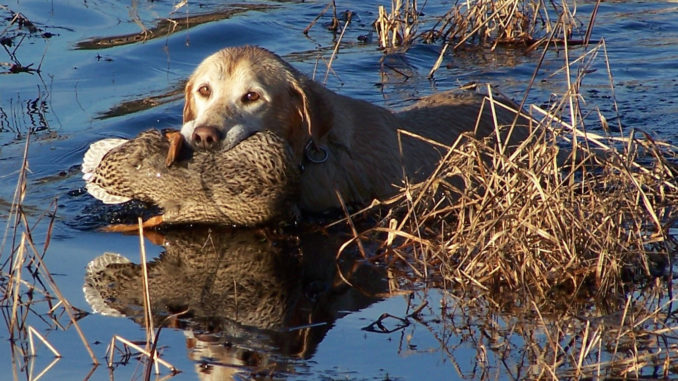
Make sure your duck impoundment is legal
As the millions of ducks breeze into the Carolinas from the duck factory, feeding will be the first task for these winged arrivals. Landowners with fields of grain submerged under a shallow layer of water will fare well during both segments of the season. But waterfowlers must follow strict guidelines to ensure that crops are handled correctly to prevent an unfriendly visit from the local game warden.
Impoundments can offer ducks an enormous food source and an ideal hunting scenario. From Japanese millet and sorghum to corn and rice, these nutrient-rich groceries will quench the hunger pangs of any migrating flock. If planted and flooded in a timely fashion, impoundments should have mature grains available for ducks this month. But how exactly should hunters treat crops to stay legal?
Unlike mourning doves, the U.S. Fish and Wildlife Service prohibits any manipulation of crops outside of normal agriculture practices. For doves, crop rows can be manipulated for wildlife management purposes or mowed to scatter seed for doves. Waterfowl management areas are treated differently. Federal law prohibits taking waterfowl by the and of bait, and hunters don’t have to necessarily hunt over the bait for their actions to be considered unlawful. For instance, pass-shooting ducks on the way into a baited area will earn hunters a ticket. Crops can either be harvested under normal agriculture practices or left standing before flooding. No manipulation of any kind is allowed before flooding, and that includes: mowing, cultivating, grazing or any other physical action scattering grain. All of these methods will ensure a ticket from a federal or state wildlife enforcement officer if hunted over or used to harvest waterfowl species.
Waterfowl will come to scattered grain under flooded conditions as soon as the opportunity arises. But even planted, unharvested grains will fall into reach of waterfowl over time. If fields are flooded four to six weeks before ducks start arriving in November, the stalks and stems will have deteriorated enough for the grain to be within reach.
Traditional planting and mowing after grain matures is only considered illegal when grains are planted. Natural vegetation with seeds or naturalized grains is not considered planted crops. These fields can be manipulated through mowing for waterfowl and hunted over lawfully. This practice is considered part of a moist-soil management area.
While most waterfowl plantings — including corn, sorghum, rice and millet — are considered annuals, some of these seeds are capable of regenerating naturally. Millet and rice are both grasses and have the highest potential to reseed naturally. Specifically, Japanese millet will reestablish in successive years, and owners can legally manipulate and hunt over it without the threat of a game violation.
Additionally, impoundments with natural populations of desirable wildlife vegetation, such as nut sedge, beggars tick, Japanese knot weed, and other native weeds can be manipulated through mowing before flooding legally.
Not only will ducks thrive on terrestrial and aquatic vegetation, they are omnivorous and eat a variety of gastropods, small fish, larvae, worms, grubs, tadpoles and even small frogs. Impoundments planted with grains or allowed to naturally-vegetate, benefit from early flooding to promote aquatic life.




Be the first to comment